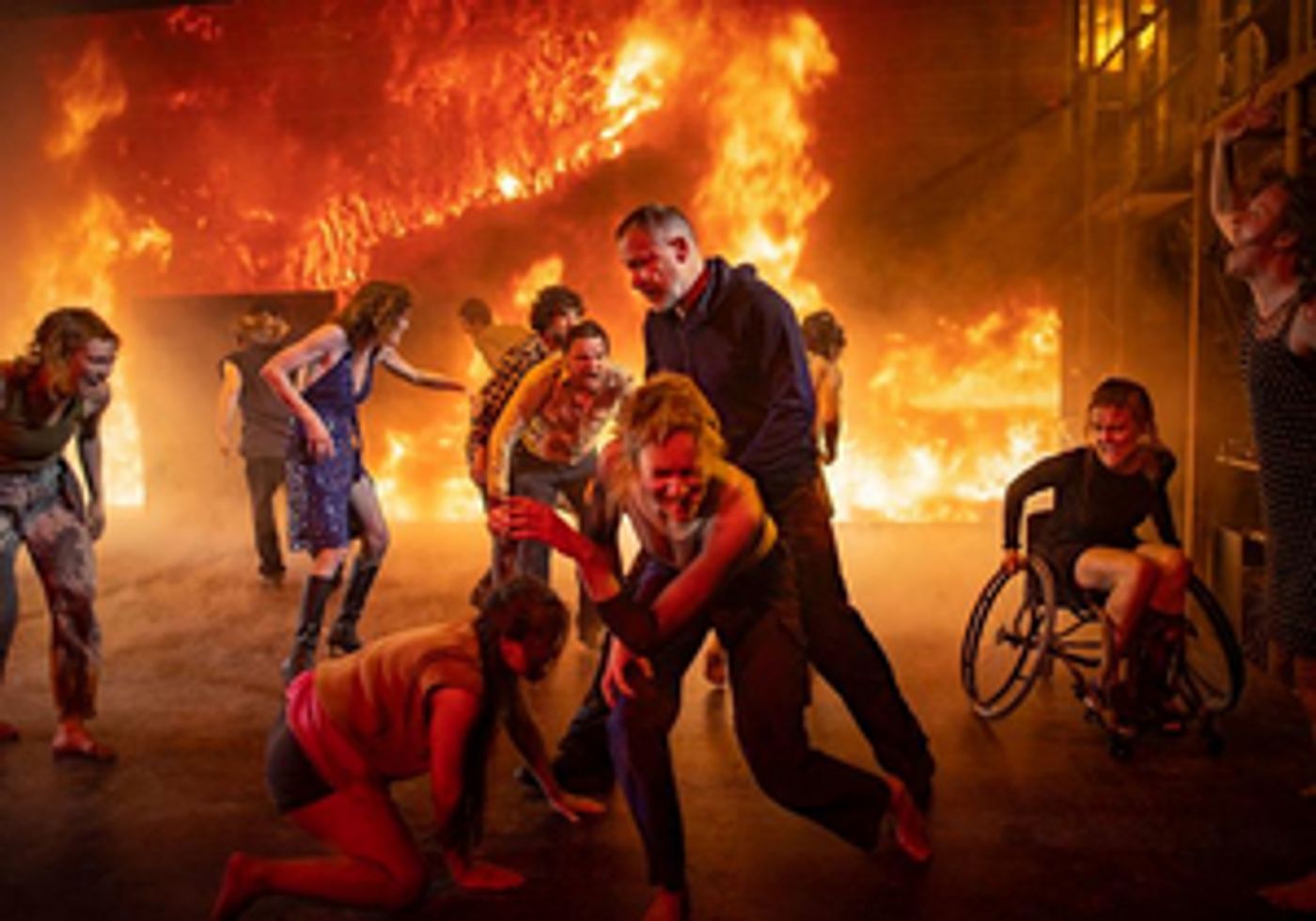Review: AGE OF RAGE, Barbican Theatre
Revenge is a dish best served old.

![]() Revenge is a dish best served old seems to be the message in Age of Rage from Ivo van Hove's extreme theatre specialists ToneelgroepAmsterdam.
Revenge is a dish best served old seems to be the message in Age of Rage from Ivo van Hove's extreme theatre specialists ToneelgroepAmsterdam.
The Dutch theatre group don't do anything by halves going by their previous Barbican visits, both based on the works of Shakespeare. In 2009 and 2017, they took on on Coriolanus, Julius Caesar and Antony and Cleopatra for their six-hour long Roman Tragedies while their four-hour-long Kings of War in 2016 covered Henry VI, Richard III and Henry V. And the cherry on top? Everything is conveyed in gloriously guttural Dutch with surtitles and projected text in English to keep us up to speed.
Is van Hove is bored of the Bard? Maybe - his latest opus takes us over three thousand years into the past and into seven Greek tragedies from Aeschylus and Euripides. The multi-generational story centres on the Trojan War and the royal families that fought it after Paris waltzed off with Helen. The latter's husband Menelaus asks his brother Agamemnon, the king of Mycenae, for help in defeating Troy and getting Helen Back. The brother agrees but desperately needs the gods on his side before he can attack. The oracle's advice is clear but terrible: sacrifice your eldest daughter Iphigenia to Artemis. Against his wife's wishes, Agamemnon complies and so begins a brutal cycle of violent retribution which carries on during the decade-long war in Troy and then, eventually and inevitably, consumes the king and his family.
While Roman Tragedies and Kings of War used business clothing and modern settings, Age of Rage goes in a very different direction aesthetically as seen through Jan Versweyveld's exciting set design. The stage is set up more like a rock concert and, with more than a passing similarity to Hofesh Shechter's Political Mother, crunching guitars and pulsating choreography (from BL!NDMAN and Wim Vandekeybus respectively) are used to dazzling effect at the beginning and on occasion throughout.
As the drama moves across time and geography, a projection screen brings us up to date, providing information about the current part of the family tree we are focussing on (handy as some of the cast have multiple roles); the screen is also used more graphically, displaying huge blazing fires as well as the souls of the recently departed dancing on their way to the afterlife. The stage itself changes: the top layer after the interval retracts to reveal the mud pit used for the remainder of the play.
There are powerful performances across this large cast, driving home the terrible emotional cost of Iphigenia's sacrifice. As Agamemnon and, later, his father-in-law Tyndareus, Hans Kesting is just as imperious as he has been in previous ToneelgroepAmsterdam works. Equally convincing whether portraying a stentorian man of war or a grieving father, Kesting adds dramatic ballast to every scene he is in.
Alongside him, Chris Nietvelt is simply magnificent in her dual role of Agamemnon's wife Clytemnestra and Helen of Troy. Ilke Paddenburg is the cast's "redshirt", playing the doomed Iphigenia and other characters which are dead or on the verge of death with affecting elegance and aplomb.
Where van Hove's latest epic sometimes falls down, though, is not in the acting or presentation but in its slavish adherence to the original text. While Shakespeare was not exactly the master of banter (known more his works' speeches than the interchanges), Aeschylus and Euripides, as interpreted by van Hove, can be painfully prolix. There is some smart and pointed text in there which points to contemporary issues ("if a fool sways the masses with his words, the land is lost") but they are at times swathed in a morass of chest-beating polemics against fate, the gods and family members.
In a case of remarkable serendipity, Punchdrunk's The Burnt City (another three-hour-plus mega-production) is also telling the tale of Agamemnon and the Trojan War albeit in English and through the medium of immersive theatre. Whereas that breaks down the story into intermittent and bitesize pieces, Age of Rage can be more of a full-throttle thrill which, when it hits top speed, is an exhilarating experience.
Age of Rage continues at The Barbican until 8 May.
Reader Reviews
Videos

